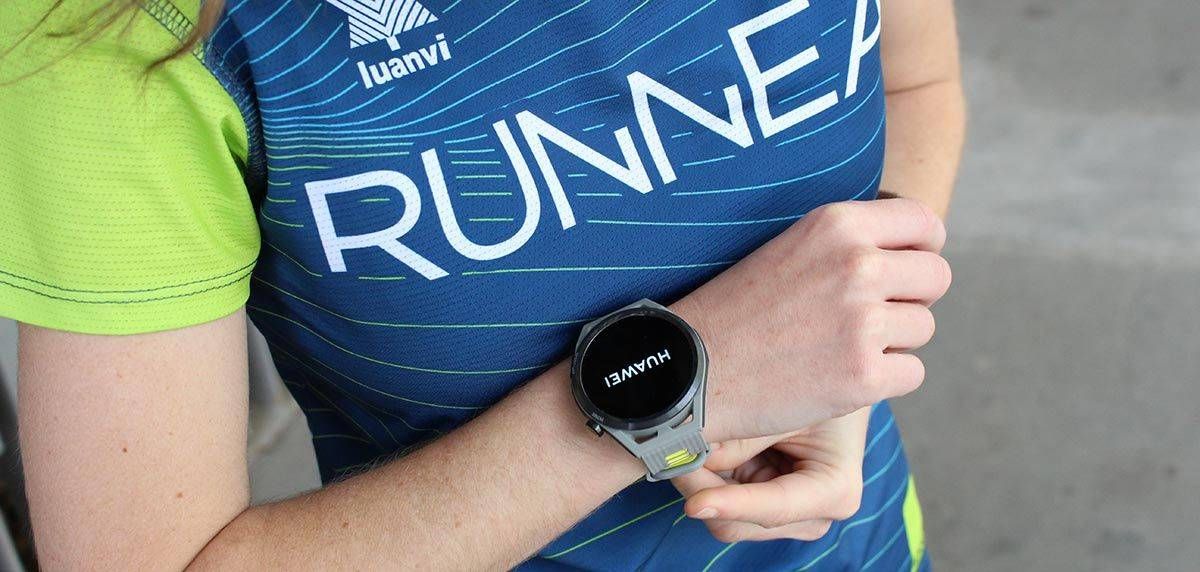Heart rate-based training has become an essential tool for runners of all levels, but especially for popular runners. Only with a heart rate monitor it is possible to optimize training, so that it is more efficient and also safer. However, it is important to know how our heart rate works and in which ranges to move in order to achieve a better performance depending on the challenge we face. The ideal heart rate zone can vary depending on the type of race you are preparing for. Today at RUNNEA, we want you to know the most effective heart rate zones for training a 10K, a half marathon and a marathon, with the support of scientific evidence and the help of our team of coaches from the RUNNEA app.

Heart Rate Ranges for Runners
While it is ideal to perform a stress test to determine the different zones and the heart rate range in each zone, a common way to estimate your maximum heart rate (HRF) is to subtract your age from 220. However, keep in mind that this method is fairly general and may not be accurate for everyone.
Heart rate zones
The zones are calculated as percentages of your heart rate. We explain what each zone means:
- Zone 1 (<50% HRM): this is your comfort zone, where recovery and regeneration are the priorities.
- Zone 2 (60 FHR): This is where the magic of aerobic training happens, ideal for beginner runners.
- Zone 3 (60 FHR): This zone is excellent for improving your anaerobic capacity and endurance.
- Zone 4 (70-80% HRM): In this zone, you are working on your ability to maintain a fast pace for longer periods.
- Zone 5 (80-90% HRM): Here you are in high-intensity territory, improving your maximum speed and power.
Heart rate based training planning

A well-structured training plan will alternate between these zones to provide a balanced approach to improve both your endurance and your speed. But preparing for a 10k is not the same as preparing for a marathon...
Benefits by zone
- Zone 1: Improves recovery and reduces muscle stress.
- Zone 2: Develops cardiovascular base and improves efficiency in the use of fat as fuel.
- Zone 3 : Improves anaerobic capacity and endurance.
- Zone 4 : Raises your anaerobic threshold, allowing you to maintain a faster pace for longer.
- Zone 5: Develops top speed and power.
How to use heart rate zones for 10K, Half Marathon and Marathon preparation

Preparing for a race, whether it's a 10K, half marathon or full marathon, requires a strategic approach that combines several training elements. One of the most effective methods for planning your training is to use heart rate zones. Here's how to do it.
Training for 10K
Recommended zones: 3 and 4
Zone 3: Anaerobic Threshold
In this zone, you'll find yourself working at a moderate-high pace, where your body starts to build up lactic acid. Training in this zone is crucial for improving your anaerobic threshold, which will allow you to maintain a faster pace for longer in a 10K race.
- Scientific evidence: Studies such as those published in the Journal of Applied Physiology have shown that training in zone 3 can significantly improve your anaerobic threshold. This means you will be able to run faster without going into oxygen debt, which is vital for a 10K race.
Zone 4: Power and speed
This is the zone where you really push yourself, working at a pace that you will only be able to maintain for short periods. Training in this zone improves your power and speed, which is especially useful for the final sprints in a 10K race.
- Scientific evidence: A study published in "Sports Medicine" concluded that training in zone 4 improves the body's ability to handle lactic acid, allowing for more intense effort over longer periods. This is crucial for times when you need that extra boost of speed in a 10K race.
Sample 10K training plan
- Monday: Zone 3 workout, 7
- Wednesday: Intervals in Zone 4, 400 sprints
- Friday : Long run in Zone 2 for recovery, 10-12km
- Sunday: Rest day or cross-training in Zone 1
Half marathon training
Recommended Zones: 2, 3 and 4
Zone 2: Aerobic training
This zone is ideal for long runs and promotes cardiovascular endurance. In this zone, you can carry on a conversation without difficulty, indicating that you are at a sustainable level of effort.
- Scientific evidence. According to a study published in the "Journal of Sports Sciences," training in Zone 2 improves cardiovascular efficiency and the body's ability to use fat as an energy source, which is crucial for a long-distance race like the half marathon.
Samplehalf marathon training plan
- Monday: Long run in Zone 2, 12-15 km
- Wednesday: Zone 3 training, 8-10 km
- Friday: Intervals in Zone 4, 800 m sprints
- Sunday : Rest day or cross-training in Zone 1
Additional benefits: In addition to preparing you for a half marathon, training in these zones also contributes to cardiovascular health and stress reduction, according to studies published in the American Journal of Physiology.
Marathon training
Recommended zones: 1, 2, 3 and occasionally 4.
Training for a marathon is a complex process that requires a multifaceted approach. While zones 1 and 2 are critical to building a solid aerobic base, zones 3 and 4 also have their place in a well-structured training program. Let's take a look at why.
- Zone 1: Use this zone for recovery days and after long runs.
- Zone 2: Most of your miles should be in this zone to build a solid aerobic base.
Zone 3: The anaerobic threshold Why is it important?
Training in zone 3 allows you to improve your anaerobic threshold, which is crucial for maintaining a steady pace during the marathon without fatiguing too quickly.
How to incorporate it?
Do a 30-40 minute threshold run every two weeks.
Integrate shorter sets in this zone during your weekly workouts.
Zone 4: Power and speed. Why is it important?
Although the marathon is primarily an endurance event, having the ability to change pace and respond to the demands of the race is vital. Zone 4 helps you improve your power and speed.
How to incorporate it?
Do interval training in this zone every 2 weeks or so.
Don't overdo it; a zone 4 workout should be followed by a recovery day or a zone 1 or 2 workout.
Caution: It is crucial not to overload your training with too many sessions in zones 3 and 4, as this could lead to overtraining or increase the risk of injury. The key is to find a balance and listen to your body.
Sample marathon training plan
- Monday: Long run in Zone 2, 18-22 km
- Wednesday: Zone 3 training, 10-12km
- Friday: Short intervals in Zone 4, 400 m sprints
- Sunday: Active rest day or cross training in Zone 1
Read more news about: Running Training





























